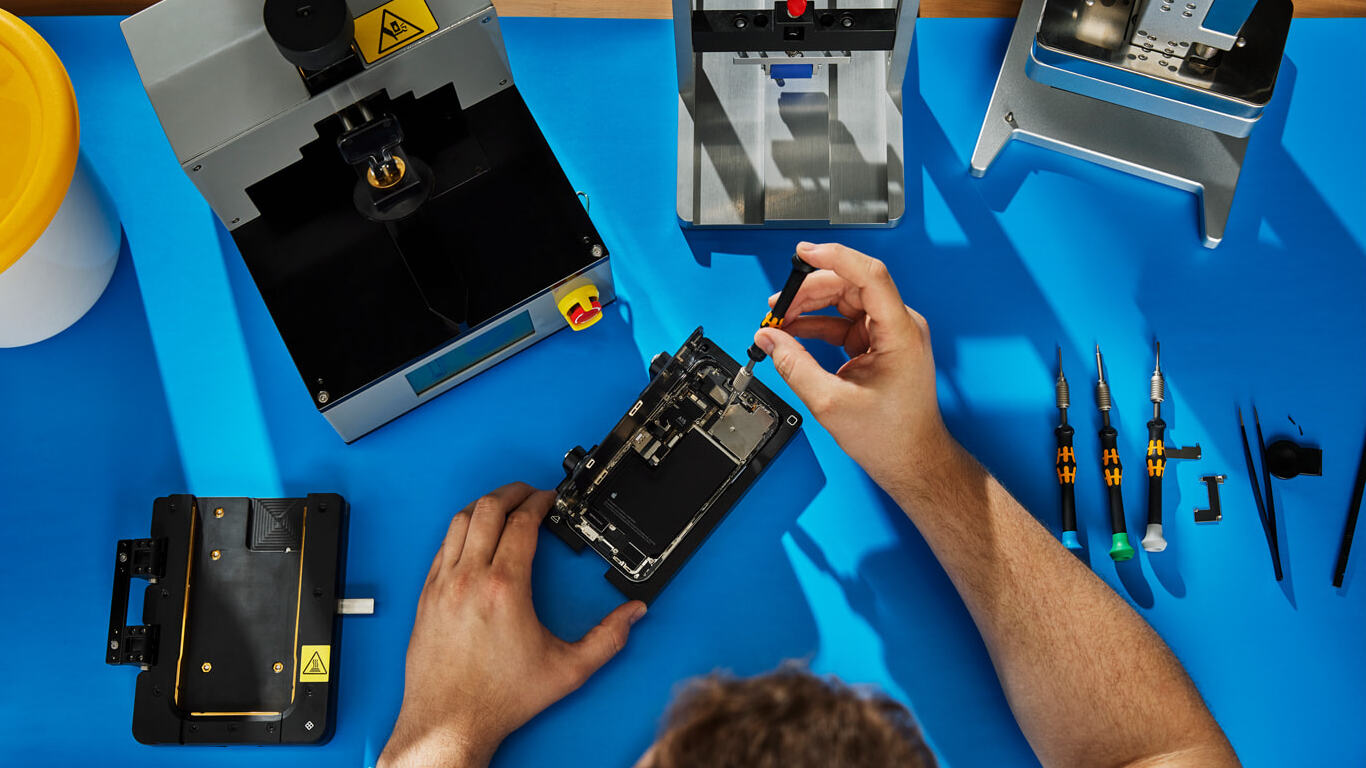iPhone parts pairing doesn't 'block third-party parts from working,' Apple hardware chief argues as he defends the controversial process
Apple's head of hardware says that parts pairing has its place.

Apple's policy of parts pairing has long been a controversial one among right-to-repair advocates and lawmakers, but the company's head of hardware engineering has sought to defend it. Contrary to the way some people see it, he says, parts pairing does not prevent third-party parts from working in iPhones.
Parts pairing is a process of configuration that is required in order to authenticate parts when they are installed in Apple devices, including iPhones. It's a process that previously prevented the installation of some older parts in an attempt to save money and reduce waste — something that Apple recently announced would be allowed as part of its iPhone repair process — but only for its latest and best iPhones, for now.
“‘Parts pairing’ is used a lot outside and has this negative connotation,” Apple senior vice president of hardware engineering, John Ternus said in a recent interview. "I think it’s led people to believe that we somehow block third-party parts from working, which we don’t. The way we look at it is, we need to know what part is in the device, for a few reasons." Those reasons, Ternus says, include ensuring that biometric components have not been spoofed. Calibration is another key point.
"Why’s that a bad thing?”
Ternus was speaking to TechCrunch about Apple's repair processes and requirements when he sought to explain that the only reason parts pairing happens is to ensure that iPhones continue to work as expected, even after they've had a part replaced.
“Parts pairing, regardless of what you call it, is not evil,” says Ternus. “We’re basically saying, if we know what module’s in there, we can make sure that when you put our module in a new phone, you’re gonna get the best quality you can. Why’s that a bad thing?”
The problem, some argue, is that part pairing can severely limit which components can be installed in the first place. Repair outfit iFixit had previously lambasted Apple for the way it controls how people repair their own devices. Installing a replacement battery can, for example, cause iPhones to display a message to warn users that it isn't genuine — even if it came from an original iPhone. That's what this latest change to Apple's system should prevent, however.
Third-party parts can be installed in iPhones, but users should expect to be warned about that. Devices with swapped-in parts now say as much in the Settings app, but third-party Face ID and Touch ID components won't work because, Apple says, that'd be problematic for security.
Master your iPhone in minutes
iMore offers spot-on advice and guidance from our team of experts, with decades of Apple device experience to lean on. Learn more with iMore!
“You think about Touch ID and Face ID and the criticality of their security because of how much of our information is on our phones,” Ternus told TechCrunch. “Our entire life is on our phones. We have no way of validating the performance of any third-party biometrics. That’s an area where we don’t enable the use of third-party modules for the key security functions. But in all other aspects, we do.”
With US state Oregon expected to pass a new right-to-repair bill in a matter of weeks, Ternus was apparently quick to point out that Apple had been planning to allow the use of salvaged parts for some time — work had been ongoing for a couple of years, the report notes. Oregon had nothing to do with Apple's news.
“We want to make things more repairable, so we’re doing that work anyway,” Ternus added. “To some extent, with my team, we block out the news of the world, because we know what we’re doing is right, and we focus on that.”
More from iMore

Oliver Haslam has written about Apple and the wider technology business for more than a decade with bylines on How-To Geek, PC Mag, iDownloadBlog, and many more. He has also been published in print for Macworld, including cover stories. At iMore, Oliver is involved in daily news coverage and, not being short of opinions, has been known to 'explain' those thoughts in more detail, too. Having grown up using PCs and spending far too much money on graphics card and flashy RAM, Oliver switched to the Mac with a G5 iMac and hasn't looked back. Since then he's seen the growth of the smartphone world, backed by iPhone, and new product categories come and go. Current expertise includes iOS, macOS, streaming services, and pretty much anything that has a battery or plugs into a wall. Oliver also covers mobile gaming for iMore, with Apple Arcade a particular focus. He's been gaming since the Atari 2600 days and still struggles to comprehend the fact he can play console quality titles on his pocket computer.
